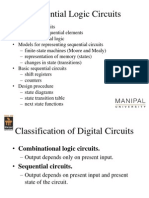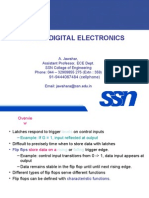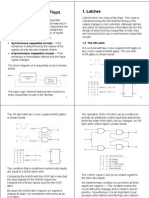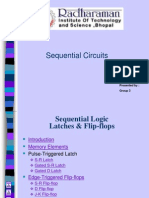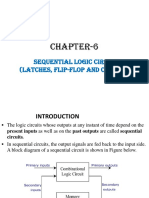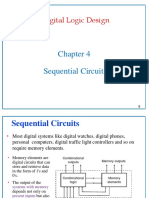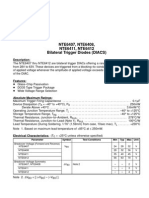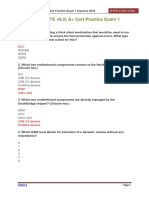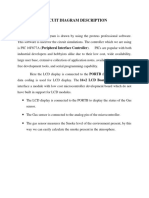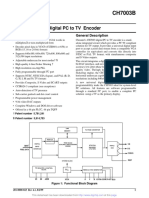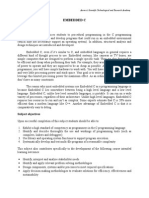0% found this document useful (0 votes)
22 views77 pagesSynchronous Sequential Logic Guide
Chapter 5 discusses synchronous sequential logic, focusing on storage elements such as latches and flip-flops, and their operations. It explains the differences between synchronous and asynchronous circuits, the functioning of various types of latches and flip-flops, and the importance of timing parameters like setup and hold times. Additionally, it covers state equations and the analysis of clocked sequential circuits.
Uploaded by
ziad.ahmed1204Copyright
© © All Rights Reserved
We take content rights seriously. If you suspect this is your content, claim it here.
Available Formats
Download as PDF, TXT or read online on Scribd
0% found this document useful (0 votes)
22 views77 pagesSynchronous Sequential Logic Guide
Chapter 5 discusses synchronous sequential logic, focusing on storage elements such as latches and flip-flops, and their operations. It explains the differences between synchronous and asynchronous circuits, the functioning of various types of latches and flip-flops, and the importance of timing parameters like setup and hold times. Additionally, it covers state equations and the analysis of clocked sequential circuits.
Uploaded by
ziad.ahmed1204Copyright
© © All Rights Reserved
We take content rights seriously. If you suspect this is your content, claim it here.
Available Formats
Download as PDF, TXT or read online on Scribd
/ 77




